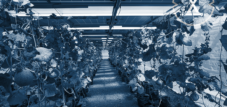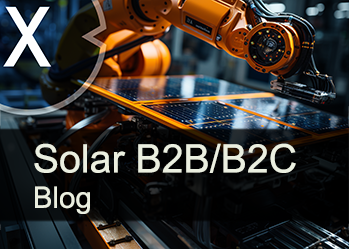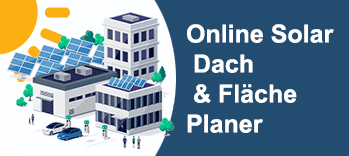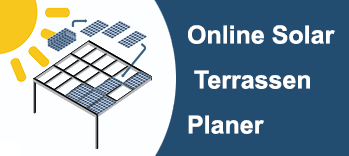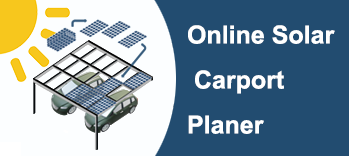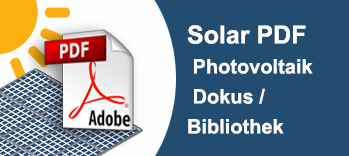Solar park in Bürstadt on 13 hectares: Conflict between agriculture and energy transition – Agri-PV as a compromise?
Xpert pre-release
Language selection 📢
Published on: September 6, 2025 / Updated on: September 6, 2025 – Author: Konrad Wolfenstein

Solar park in Bürstadt on 13 hectares: Conflict between agriculture and the energy transition – Agri-PV as a compromise? – Image: Xpert.Digital
Solar park instead of agriculture: Bürstadt's political discussion on the energy transition
The solution to the solar dispute? How this ingenious technology will reconcile agriculture and the energy transition
The transformation of the German energy industry is increasingly leading to conflicts between traditional agriculture and the rapid expansion of solar energy. This problem is particularly evident in the planned solar park in Bürstadt, a Hessian town with around 15,000 inhabitants, where a photovoltaic system is to be built on 13 hectares of arable land. The project exemplifies the complex challenges of the energy transition at the local level.
Bürstadt's path to solar energy
The city of Bürstadt already has a long history with solar energy. In 2005, the world's largest rooftop photovoltaic system, with a capacity of 5 megawatts, was commissioned on the building of a logistics company. In 2010, an innovative photovoltaic system was also installed as a noise barrier along the B47 highway, as well as other community-owned solar systems on public buildings. This prior experience has provided the city with important knowledge in the management of solar projects and raised local awareness of renewable energies.
The current solar park is to be built on an area of 13 hectares south of the B47 and west of the B44, equivalent to approximately 15 football fields. Mayor Bärbel Schader emphasized that the plant could cover two-thirds of the city of Bürstadt's total electricity consumption. The investor is GGEW (Gruppen-Gas- und Elektrizitätswerk Bergstraße), an established energy company in the region.
Economic drivers of change
Economic realities play a decisive role in farmers' decisions. While traditional agricultural lease prices in Germany average between €375 and €407 per hectare per year, landowners can achieve between €3,000 and €5,000 per hectare for photovoltaic systems. This represents a ten- to thirteen-fold increase compared to conventional agricultural leases.
This drastic difference often makes it unprofitable for farmers to bid against solar projects. A farmer in Bürstadt has already declared that he no longer wishes to cultivate his fields and instead wants to make them available for electricity generation. For the municipality, this also means additional revenue through business taxes and municipal participation agreements, which typically amount to 0.2 cents per kilowatt-hour generated.
Political reactions and citizen participation
The political reactions in Bürstadt reflect the nationwide debate. Surprisingly, the project received cross-party support. Franz Siegl of the SPD welcomed the efforts toward renewable energies, while Uwe Koch of the Green Party argued that roof space alone would not be sufficient to meet electricity demand. Even critical voices like Jürgen Heiser of the FDP, who lamented the land use, ultimately agreed.
It's noteworthy that Bürstadt's position has changed significantly since 2020. At that time, the city council rejected a 5.2-hectare solar project on Lampertheim's land, primarily due to fears of losing its say. The current approval reflects a changed awareness of the urgency of the energy transition.
An important aspect is the planned citizen participation. As GGEW board member Carsten Hoffmann explained, citizens are expected to benefit in two ways: through regional and thus lower energy prices, and through the opportunity to participate financially in the plant. This form of citizen participation has become a proven tool for increasing local acceptance of energy projects.
Land competition and food security
The discussion about photovoltaic systems on agricultural land touches on fundamental questions of food security. Germany uses approximately 16.5 million hectares for agricultural production, which corresponds to almost 50 percent of the total area. Experts estimate that just one percent of agricultural land would be sufficient for photovoltaic systems to make a significant contribution to the energy transition.
At the same time, lease prices for arable land are continuously rising. Between 2013 and 2023, they increased by 47 percent, further increasing the pressure on farmers. This trend is driven by various factors: the general scarcity of land, rising food prices, government subsidies, and, of course, competition from more lucrative alternative uses such as solar farms.
Concerns about the loss of fertile soils are justified, especially since Germany already imports a significant portion of its food. Critics argue that valuable arable land with more than 50 soil points should generally not be used for solar systems. On the other hand, proponents point out that photovoltaic systems can be completely dismantled after 20 to 30 years, while other uses such as residential or traffic areas lead to permanent land loss.
Agri-photovoltaics as a compromise solution
An increasingly discussed alternative is agri-photovoltaics, which enables the dual use of land. This technology involves installing solar modules in such a way that agricultural production can take place simultaneously. This can be achieved through elevated mounting, vertical installation, or special arrangements of the modules.
Initial experiences with agri-PV systems are showing quite positive results. In one project in North Rhine-Westphalia, a farmer even achieved higher agricultural yields under solar modules than on the neighboring reference area. The modules offer protection from extreme solar radiation, heavy rain, and hail, which can be particularly beneficial in times of climate change. However, such systems are significantly more expensive than conventional ground-mounted systems, and management is more complex.
Lease prices for agri-PV systems range between €2,000 and €3,500 per hectare per year, significantly lower than those for dedicated solar farms, but still considerably higher than traditional agricultural leases. For farmers, this means diversification of income sources while maintaining some of their food production.
New: Patent from the USA – Install solar parks up to 30% cheaper and 40% faster and easier – with explanatory videos!

New: Patent from the USA – Install solar parks up to 30% cheaper and 40% faster and easier – with explanatory videos! - Image: Xpert.Digital
At the heart of this technological advancement is the deliberate departure from conventional clamp fastening, which has been the standard for decades. The new, more time- and cost-effective mounting system addresses this with a fundamentally different, more intelligent concept. Instead of clamping the modules at specific points, they are inserted into a continuous, specially shaped support rail and held securely. This design ensures that all forces occurring—be they static loads from snow or dynamic loads from wind—are evenly distributed across the entire length of the module frame.
More about it here:
More biodiversity thanks to solar parks? Facts and concepts
Technical and regulatory challenges
Implementing solar projects on agricultural land presents various technical and regulatory challenges. First, the land must be rezoned in the land-use plan, which entails a lengthy approval process. The municipality of Bürstadt has already passed the resolution to prepare the 17th amendment to the land-use plan for "Renewable Energies," which is intended to allow for both photovoltaics and wind power.
A critical factor is proximity to grid connection points. The farther a facility is from a substation or transformer station, the higher the connection costs become. As a rule of thumb, a distance of approximately 500 meters per hectare to the grid connection point is acceptable. At greater distances, the costs of laying cables can significantly impact profitability.
In addition, various protected areas must be considered when selecting a site. Natura 2000 sites, nature reserves, and peatlands are generally excluded. Species conservation also plays an important role, as demonstrated by the example of a solar park where cables had to be laid using a directional bore to avoid impacting a bird sanctuary.
Social acceptance and civil resistance
Public acceptance of solar parks varies greatly depending on the region and project design. While the project enjoys broad political support in Bürstadt, examples from other regions show significant public opposition. The impact on the landscape and the feared impact on tourism are often viewed with particular criticism.
A frequently raised objection concerns the potential glare from solar modules, especially near federal highways. In the case of the planned Bürstadt solar park, located directly adjacent to the B44 and B47 federal highways, this issue was already addressed during the planning phase. However, modern solar modules are designed to absorb sunlight rather than reflect it, thus minimizing glare.
Citizen participation is proving to be a key factor in acceptance. Projects in which citizens can participate financially or in which the profits remain in the region encounter significantly less resistance. The model of the Starkenburg Energy Cooperative, which has already implemented several community solar power plants in the region, demonstrates how local participation can work.
Environmental impacts and biodiversity
Modern solar farms often have positive impacts on biodiversity. Valuable habitats for various plant and animal species are often created between and beneath the rows of modules. The avoidance of pesticides and intensive cultivation leads to the development of species-rich green spaces. Studies show that well-designed solar farms can even increase biodiversity.
Nevertheless, there are also critical aspects. Sealing should be limited to a maximum of five percent of the area, which is certainly achieved with modern systems. More problematic is the large-scale development of contiguous agricultural areas, which can lead to landscape fragmentation. Here, well-thought-out planning concepts that consider ecological corridors and buffer zones are required.
The time limit for solar parks is an important consideration for long-term land use. Most systems are designed for an operating life of 20 to 30 years, after which the land can be fully returned to agricultural use. This fundamentally distinguishes solar parks from other infrastructure projects that lead to permanent land loss.
Economic prospects and energy self-sufficiency
Energy self-sufficiency is becoming a strategic goal for many municipalities. Bürstadt aims to cover its own electricity needs largely from local renewable sources. The planned 13-hectare solar park, together with existing facilities and planned wind power projects, could make a significant contribution to this goal.
Solar parks create additional value for the local economy. In addition to direct investments, jobs are created in planning, construction, and maintenance. Municipalities benefit from trade tax revenues and participation agreements. In the Bürstadt project, residents are also expected to participate directly through lower electricity prices and participation opportunities.
Long-term profitability depends heavily on the development of electricity prices. Current forecasts predict further rising energy prices, which further increases the attractiveness of solar investments. At the same time, the costs of photovoltaic systems are continuously falling, leading to further improvements in profitability.
Future prospects and innovations
Technological developments are opening up new possibilities for integrating solar energy into agriculture. Floating PV on bodies of water, solar systems above parking lots and along roadways, and innovative agri-PV concepts can reduce the pressure on agricultural land. The technical potential of these applications is considerable and could significantly reduce the need for ground-mounted systems on arable land.
Particularly promising are vertical agri-PV systems, which allow for virtually unrestricted agricultural use between the module rows. These systems also have the advantage of delivering good yields in the morning and evening, as well as in diffuse light, thus better dispersing power production over time.
Digitalization opens up further optimization opportunities. Smart farming technologies can make the management of agri-PV systems more efficient, while intelligent grid integration better utilizes the advantages of decentralized power generation. Combining solar power with battery storage and Power-to-X technologies can also improve system integration.
Balancing competing interests
The Bürstadt example shows that the conflict between agricultural use and solar energy is not necessarily insurmountable. Through transparent planning processes, fair citizen participation, and innovative technologies such as agri-PV, compromises can be found that meet the interests of all parties involved.
A balanced approach that protects high-quality arable land as much as possible while simultaneously enabling the necessary expansion of renewable energies is crucial. Policymakers are called upon to set clear guidelines and create incentives for innovative solutions. Prioritizing previously contaminated land and synergy concepts such as agri-PV over pure competition for land.
The energy transition requires societal compromises and the willingness of all stakeholders to rethink traditional ways of thinking. The Bürstadt case demonstrates that this can certainly be achieved if all stakeholders participate in constructive dialogue and jointly seek sustainable solutions. Balancing food security and energy security will remain one of the central challenges of the coming decades, but innovative approaches such as agri-photovoltaics demonstrate ways in which both goals can be reconciled.
Look, this little detail saves up to 40% installation time and costs up to 30% less. It's from the USA and patented.

NEW: ready -to -mount solar systems! This patented innovation accelerates your solar construction massively
The heart of ModuRack 's innovation is its departure from conventional clamp fastening. Instead of clamps, the modules are inserted and held in place by a continuous support rail.
More about it here:
Your partner for business development in the field of photovoltaics and construction
From industrial roof PV to solar parks to larger solar parking spaces
☑️ Our business language is English or German
☑️ NEW: Correspondence in your national language!
I would be happy to serve you and my team as a personal advisor.
You can contact me by filling out the contact form or simply call me on +49 89 89 674 804 (Munich) . My email address is: wolfenstein ∂ xpert.digital
I'm looking forward to our joint project.









